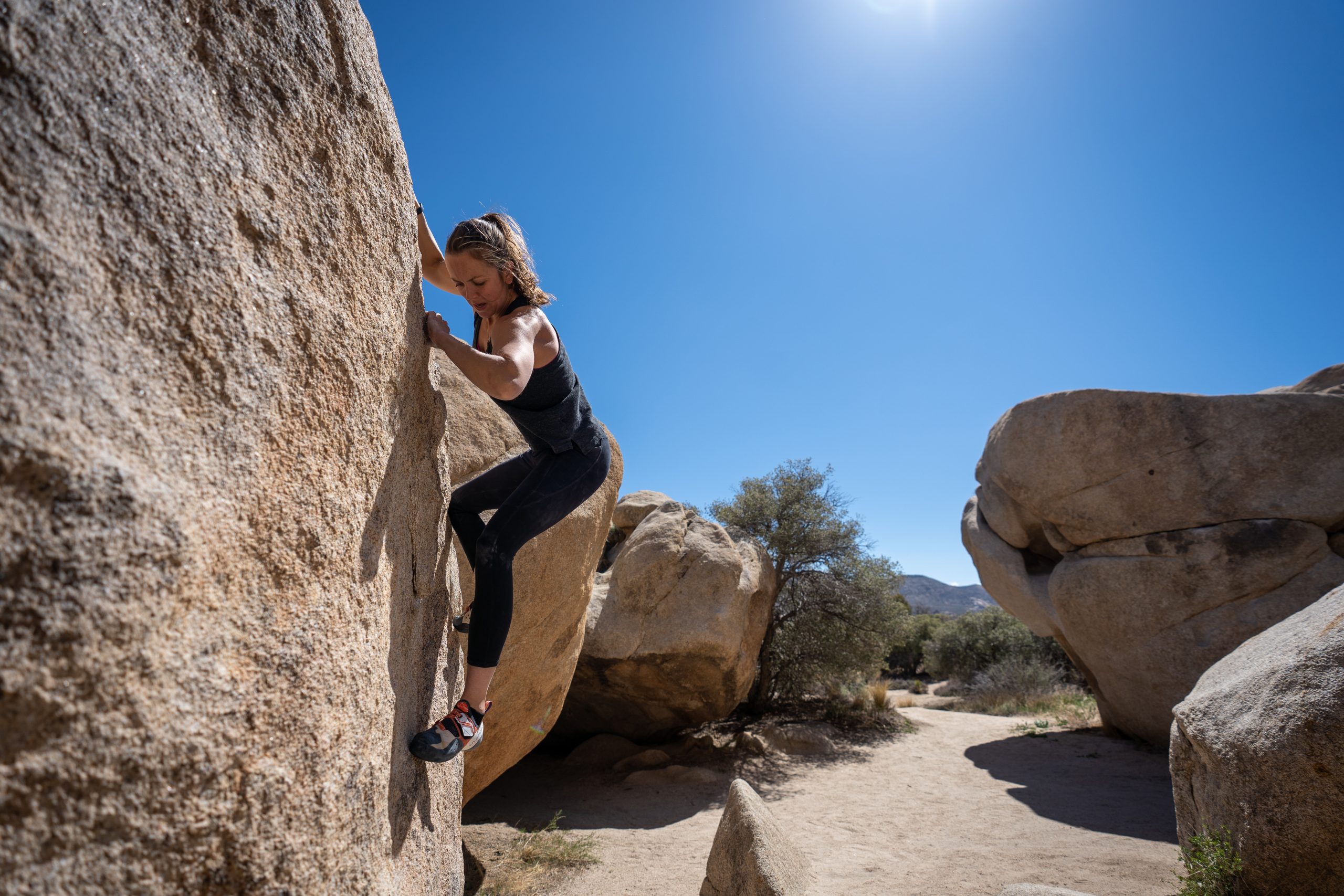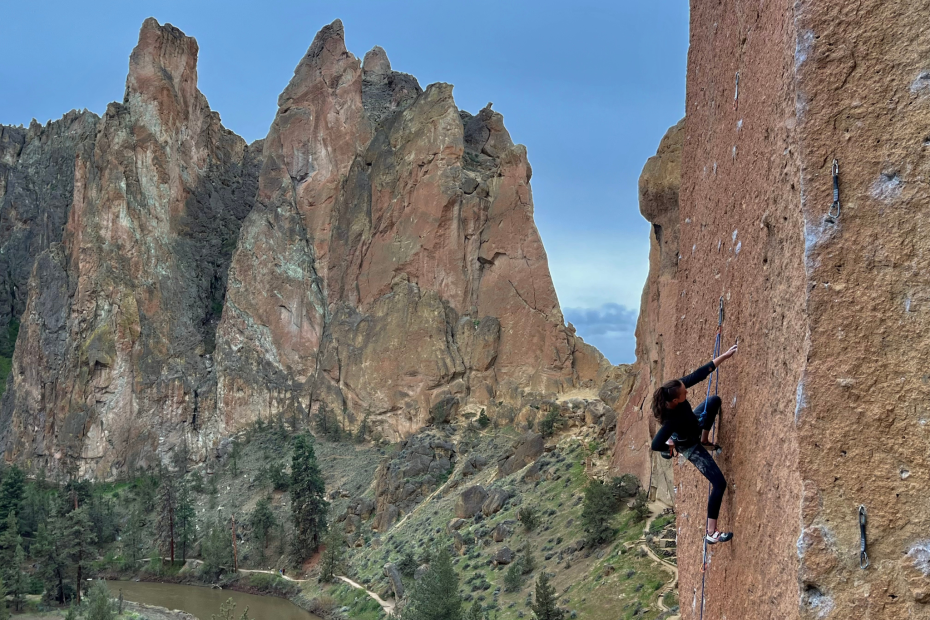I’ve been climbing seriously for five years. That’s not that much time, but it’s certainly enough to have created an idea of who I am as a climber. Then, in spring this year, I went on a trip to Smith Rock that kind of shattered all of it. And I ended up with a finger injury. But sometimes you have to take a step backward to take a bigger one forward.
That trip – injury included – was totally worth it.
I come from a dance background: ballet, to be precise. You’d think it a no-brainer that I’d apply the skills I learned in dance to climbing. And I did, but only some of them – “soft skills” mostly. For some reason, I decided that the balance, footwork, and flexibility I’d acquired through dance was pretty worthless.
Those sound like things that would help in certain styles of climbing, right – slab being an obvious one. But all I wanted to do was climb steep things and throw them jugs to the ground like the boys. I wasn’t naturally powerful, nor did I come with strong fingers. And the things that I did have, I didn’t really use.
In the end, I basically spent five years bashing my head against a wall and working on my weaknesses. And I got much, much better at those styles: I became more powerful, and my fingers got stronger. But it was hard work. It didn’t come naturally, and I had to grind it out: where others would just naturally pull a power move, I had to learn how.
I told myself that I wasn’t an intuitive climber. And that was okay – I had other strengths. When it came to movement, I just had to learn the old-fashioned way: through repetition, hard work, and determination. I learned all the moves. I remembered all the beta. I knew exactly why I was placing my foot on this hold on instead of that one. Because I had to: I couldn’t just intuitively know which foot to use.

And then I went to Smith and all that changed. For the first time in my climbing life, things were intuitive. It was obvious how to move between the holds: my body just knew what to do. And my brain couldn’t necessarily explain it. Where I wanted a foot, there was a foot. When I wanted a hand, there was a hand. I flowed through routes that comments on 8a.nu called “hateful” and “heinous”.
At first, I thought everything I had tried was soft. But after talking to friends and locals, I found something else out instead: that I was good at that style. As the trip went on and the sends came rolling in, I couldn’t deny it anymore: I was good at that style. I got my hardest-ever flash, and matched my hardest onsight and my hardest redpoint in two weeks at a new-to-me crag.
Turns out, the whole “I’m not an intuitive climber” thing came down entirely to style. And most people aren’t intuitive climbers in their antistyles… I had just spent years climbing only the styles I was bad at and no time leaning in to what did come naturally.
A big part of this, I think, is that most people don’t like the style I do: balancey, techy, insecure slab. So I wasn’t exposed to it very much, and it definitely wasn’t presented to me as something that was valued in the climbing world. Go to any climbing gym and bros doing weighted pull-ups are a dime a dozen. Compare that to how many people are working on their slab technique. Exactly. But another big part was down to me: for some reason, I wanted to be good at what everybody else was good at.

This part is kind of strange because I’m kind of strange – like, in my regular life I mean. I’m definitely a weirdo, and that’s something I like about myself. So I don’t know why it took me so long to embrace being a slab weirdo in climbing. But it’s good to be here now. And I’ve learned that while it’s helpful to work on your weaknesses, it’s also worthwhile to lean into your strengths. You don’t have to send the hardest thing you’ve ever sent in your antistyle. And the mental gains you get from climbing harder stuff in a style that suits you are real.
I tried my first 5.13 this summer, and I did all the moves in my first session. Surprise: it’s a technical, balancey, insecure slab. Am I going to send it? For sure. It may not be this year, but it will go down. And the next time I get shut down on a 12c power move, I’ll have a whole new perspective.
As for my injured finger, it’s now back to 100%. (And I took fastidious notes about the recovery process for my next blog post.) The eight-week setback was a price I was more than willing to pay to change my whole perception of myself as a climber. Smith Rock 2023: best trip ever.
Featured image: Gaar Lausman
Other images: Ryman Wiemann
